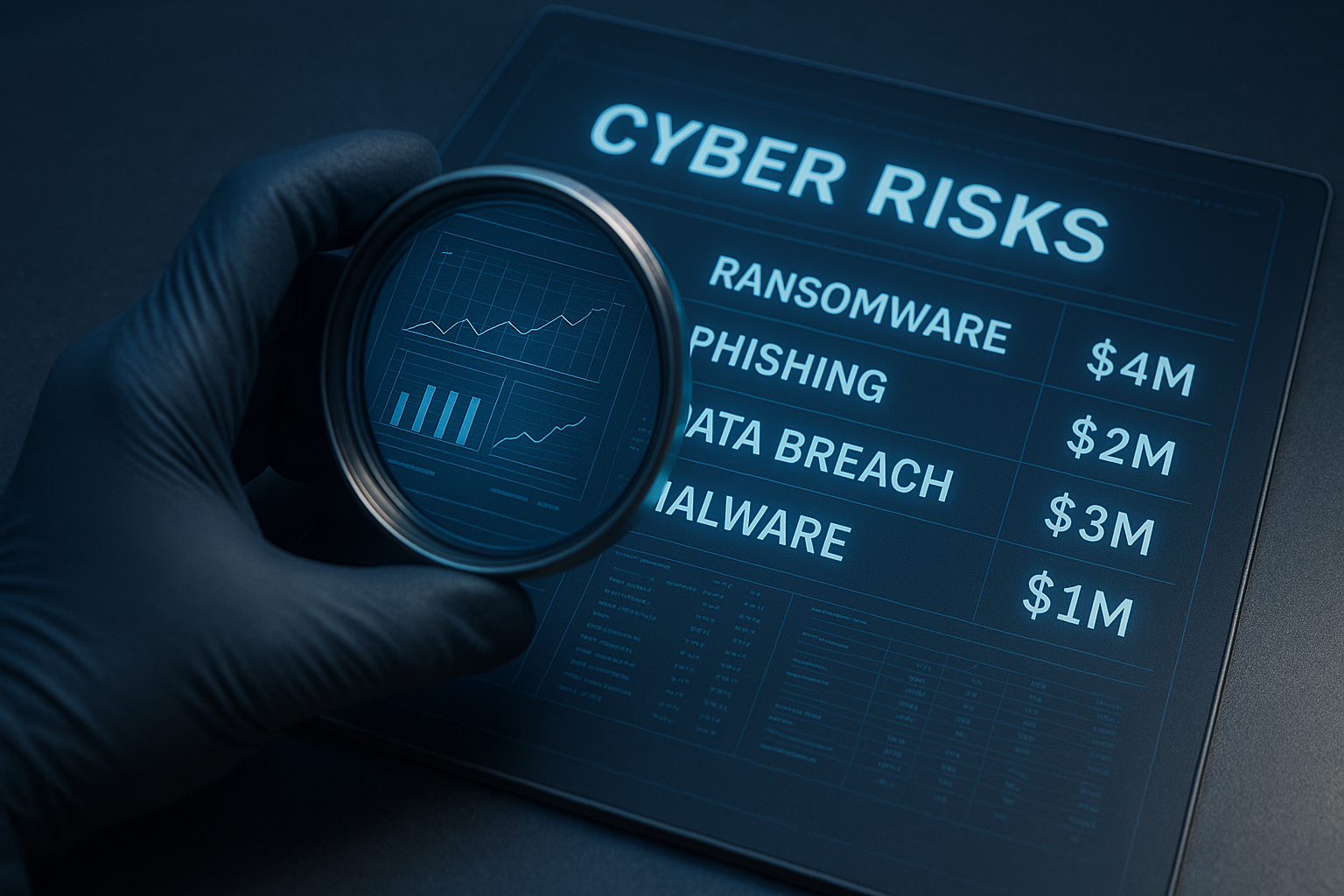Cybersecurity and risk management are essential to the success of an enterprise, but not all business units see it like that. Rather, executives and board members can see it as a roadblock. Because leaders don’t understand the value of cyber risk, they will be less incentivized to invest and improve their cybersecurity posture. The technical details, the changing regulations, and the ever-evolving attacks can all become quite confusing for those unversed in security and risk.
When executives, Boards, and non-technical teams are presented with too high-level content, they’ll become less interested in cybersecurity. This is the opposite of what security teams want when modern risks lurk in every corner. Risks will never be fully mitigated; some risks are necessary for growth, and quantitative risk analysis has become the go-to method for communicating cyber risk in business terms.
It’s important to remember that there are many cyber risk quantification methods, and they vary widely in efficiency. Older quantitative methods that resorted to assigning scores to organizations failed to provide security teams with actionable insights. The FAIR model has become the answer to this conundrum with the ability to analyze risk scenarios in financial terms with a standardized taxonomy and provide transparent insights about loss event frequency and magnitude.
Cyber Risk Quantification for Security Buy-in
If you’re a CISO taking a risk-first approach, you must demonstrate cyber investments' importance and success. Risk-first does not mean risk aversion. Risk is complex and not inherently bad for a company (although a full-blown ransomware attack is never a good thing). CISOs need the tools to help them explain the sources of risks and nuances involved with risk. For a company to grow, enterprises need to take calculated risks that encourage growth while protecting with proactive cyber risk management at the same time.
Security teams cannot take these risks alone; cyber risks must be aligned with business goals and communicated to executive leaders. Cyber and IT risks involve the internal and external risks that impact an organization as digitization expands. These risks have the potential to affect the supply chain, customers, and third-party partners.
With “shared risk-taking,” CISOs can work with senior members to develop a cohesive and strategic approach to risk management in cybersecurity. The FAIR framework empowers CISOs to communicate the existing security posture in financial terms to board members and non-technical business units. Now that board members can really understand what CISOs are talking about, they’ll be more incentivized to invest in security and see the importance of cybersecurity.
By working together and establishing a baseline understanding of risk, the company’s culture towards risk will shift and encourage greater collaborative efforts rather than siloed security activities.
A quantified risk-first approach also ensures that a CISO will not be the scapegoat for all security risk events since the responsibility of risk is now shared. Armed with the confidence that their job is not on the line with every security event, security teams will be more likely to take greater calculated risks based on the information distilled through the FAIR framework.
Mature organizations typically use the FAIR methodology, but it can be an option for more immature organizations by adding a few more steps that are worth the effort. The more mature an organization is, the better equipped it is to prevent cyber threats. Mature companies will have a risk-aware and cyber-aware culture, enhanced visibility across the organization, and risk-integrated with strategic decisions, among many other security abilities. The NIST CSF implementation tiers can guide organizations to reach the maturity level needed for FAIR usage.
In addition, rolling cyber risk into an enterprise’s risk appetite statement can help CISOs further contextualize cyber risk quantification. A risk appetite statement is the potential risk tolerance that the entire organization is willing to take on for business success. It is a central document for organizations to refer to when making decisions about new risks using risk assessments.
This statement supports the “shared-risk taking” approach by creating a single source of truth for executive leaders and security teams to refer to. By incorporating cyber risk into the statement, both parties can evaluate the risks in the organization as a whole and decide on risks to take together.
The Limitations of Black-box Risk Quantification Techniques
If you haven’t yet been convinced to look into FAIR cyber risk quantification, let’s dive into the disadvantages a company will face with black-box quantitative risk assessments. Methods like ordinal number risk scores assign a numerical value to a level of risk, but what a “level one” scenario compared to a “level two” scenario bears no actionable meaning. How the level of risk is assessed is unclear. These levels are baselined on a subjective measurement scale, and security leaders are left scratching their heads trying to understand what made them even reach a “level three” scenario.
Methods like vulnerability assessments or threat analysis fail to consider factors like frequency of attacks, non-malicious errors/events, and the consequences of a security breach. These methods assign a numerical value to cybersecurity, but these insights fail to frame security and risk in a business context. With such methods, companies have no idea how often a breach could occur with their current security posture and the associated impact of each attack.
If CISOs themselves cannot understand the results of these methods, it will be even more difficult to convey how security risks impact business outcomes. A shared risk responsibility and risk-first approach cannot be implemented when the sources of risk and security posture are unclear. A company will stagnate in growth if it cannot take calculated risks.
Crafting a Story for the Board
Security leaders must leverage a structured framework when reporting cybersecurity to the Board that establishes cyber risk as an integral business function. Using the financialized cyber risk data, risk appetite statements, and establishing a risk-first approach will enhance clarity in board meetings and convey risk as an invaluable stake in the company’s growth. It’s important for CISOs to outline security information, risks, and stakes in an approachable language for business-side leaders and to emphasize the ROSIs the company gains with effective risk management.
Learn more about our flexible approach to cyber risk quantification and how we support actionable insights for cybersecurity Board reporting with a demo.





.png)
.png)
.png)
%201.png)
.png)




